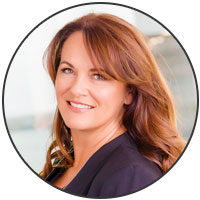Employee or Self-employed?
Electricians who are employees cannot claim any employment related expenses whereas electricians who are self-employed either as sole traders or via a company can claim a wide range of business related expenditure. This article considers the tax rules for some common types of expenditure that may be incurred by self-employed electricians.
Tools and Equipment
Tools and equipment costing less than $500 plus GST can generally be fully claimed as a tax-deductible expense. However, the $500 limit is per supplier per day. So, if the electrician buys two tools for $300 plus GST each on the same day from the same supplier, the $500 limit is exceeded and neither tool can be fully claimed for tax in the year of purchase. Instead both tools are “capitalised” and then written off for tax over a number of years by way of “depreciation” claims. This also apples to any single tool or other equipment costing more than $500 plus GST.
The general straight line depreciation rate for tools is 67% which means that they will be fully claimed for tax over two years in any case. Some equipment will have lower rates, for example:
| Straight Line Rate | No. of Years to Write Off | |||
|---|---|---|---|---|
| Wirecutters/Strippers | 10.5% | 9.5 | ||
| Test Equipment | 17.5% | 5.9 | ||
| Ladders | 17.5 | 5.7 | ||
| Trailers (up to 3.5 tonnes) | 8.5% | 11.8 | ||
| Motorcar | 21.0% | 4.8 | ||
| Van or truck (up to 3.5 tonnes) | 13.5% | 7.4 | ||
Home office and storage expenses
If an area of the electrician’s home is used for business purposes, then a proportionate claim for household expenses can be claimed. This could include a dedicated room in the house used as a home office and an area in the garage used to store a business vehicle, equipment and materials. Costs such as mortgage interest, rates, insurance, electricity and external repairs and maintenance could be claimable apportioned on a floor area basis. In addition, specific repairs and maintenance to the areas used for the business could be fully claimable. Where an area of the home is only partially used for business purposes, for example, the dining room table is regularly used for preparing invoices to customers and payments to suppliers, it is still possible but more difficult to establish an expense claim. It is more certain if the area claimed for is 100% for business use.
Home phone and internet
These expenses should be apportioned based on the following formula:
Total Use
Generally Inland Revenue accepts 50% of home telephone expenses are claimable where used for business purposes but a higher proportion can be claimed if it can be justified.
Wages paid to husband or wife and other family members
Generally, salaries and wages paid by a company to full time shareholder employees are accepted as being fully claimable for tax. This can include payments to the principal owners of the company as well as their wife or husband. However, if excessive amounts are paid to the husband or wife of the principal of the company there is a risk that Inland Revenue could disallow a tax claim for the excessive amount.
If the business is operated by the owner as a sole trader rather than via a company, then wages paid to their husband or wife are not claimable for tax unless prior approval is obtained from Inland Revenue.
Payments to children and other relatives of an owner, shareholder or director can be claimable but care should be taken to ensure that the amount is not excessive. In particular, payments to children under the age of 20 are likely to be challenged if for significant amounts.
Interest
Generally, interest on amounts borrowed to buy business assets or to fund working capital for the business will be claimable for tax. In some cases, where businesses have been funded by cash injections from the owner and the owner has borrowings for purchase of the home or other private assets, there may be opportunities to restructure borrowings so as to maximise tax deductions. You should consult your tax advisor on this.
Bad debts
It is possible to claim a tax deduction for debts owing to the business that can’t be recovered. However, in order to claim the deduction, the debt must be properly “written off” as bad. If the business is operated by a company, then a written resolution of directors should be prepared and a journal entry made in the books of the company. This needs to be completed before the end of the relevant financial year.
Materials (trading stock) and Consumables
Generally, a tax claim for materials (trading stock) can only be made when the materials are applied to a job. The cost price of materials on hand at the end of each year are effectively carried forward to the next year and so on until they are eventually applied to a job. There are various alternative methods of valuing stock on hand that can reduce the amount of tax payable.
Consumables are generally claimed when purchased unless the total value of consumables held exceeds $58,000.
The above is of a general illustrative nature only and should not be relied upon as advice in any particular circumstances. Specific professional advice should be obtained in every case.
Contact Real Time Accounting Ltd Today.
Tel: 0800 DIAL RTA | Tel: +64 9 601 9382
www.realtimeaccountingnz.com

























